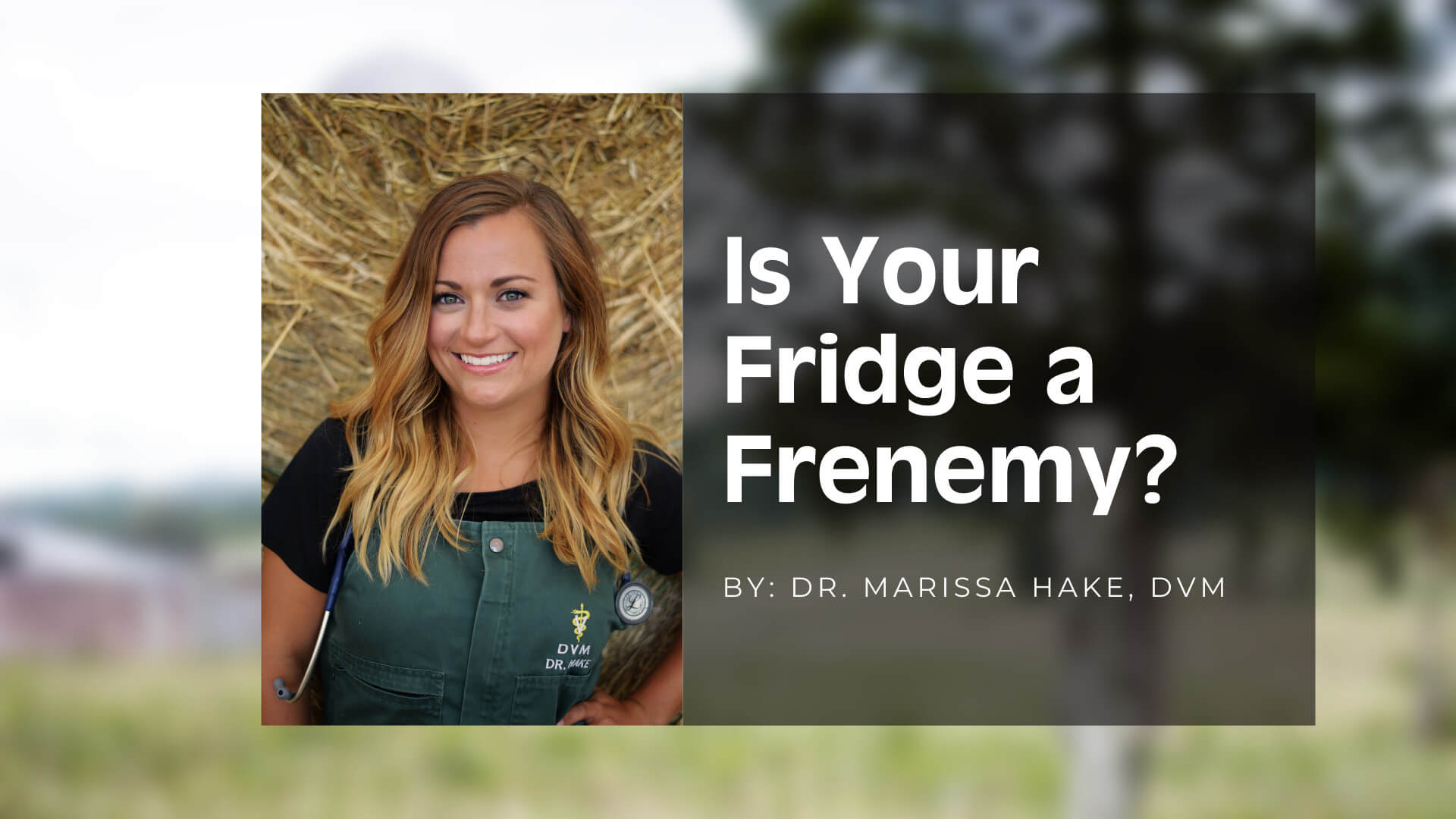


Is your refrigerator a friend or an enemy, or perhaps a frenemy? A “frenemy” is a friend who’s an enemy behind your back, much like a fridge you think is doing it’s intended job but is not! Vaccine refrigeration seems simple yet is often the reason for vaccine failure!
Most of our cattle vaccines should be stored at a consistent temperature of 35-45˚F, but studies have shown that 25-75% of refrigerators do not maintain these temps! Many vaccine fridges are outdated because they were “repurposed” from the house to the barn! While this is probably ok for the beer, it’s a risk for our cattle vaccines!
Your vaccines are a large financial investment, inappropriate storage and handling puts them at risk of being useless. Any fluctuation out of the normal manufacture recommended temperature range can impact potency, furthermore a single exposure to freezing temperatures (32˚F or colder) can completely destroy potency. Freezing of killed or modified-live vaccines can cause the adjuvant to separate from the antigen. The vaccine adjuvant tells the cows body “yoohoo, over here! Come look at this antigen and make an immune response against it!”. In addition to decreased potency, freezing can also increase the risk for adverse vaccine reactions. Vaccine that gets too warm or worse, frozen should not be used.
Say you vaccinate your calves with a modified-live 5-way respiratory vaccine and a 7-way clostridial vaccine. Depending on the specific vaccines you could be looking at a $2+ per calf investment. A simple mistake like letting the vaccine get too warm can be expensive beyond just the vaccine cost. You now invested time and resources into processing the animals only to give an ineffective vaccine. Most importantly the animal went through undue stress, only to have suboptimal or no vaccine protection.
Dedicated Vaccine Fridge – If you have a large enough operation, a dedicated vaccine refrigerator is ideal to protect your vaccine investment. Fridge traffic impacts temperature. Vaccines should never be stored in fridges used to cool colostrum or ones that are opened/closed frequently. Avoid storing vaccine in the drawers or doors, as those areas have the greatest temperature variation.
Too hot or too cold – For just a couple bucks internal fridge temps can be monitored with a simple fridge thermometer. In barns that run off generators, ensure that fridges are getting consistent power. If possible, avoid using dormitory-style fridges with internal freezers. The freezer portion often will ice over and can freeze vaccines.
Additional Resources:
https://www.extension.uidaho.edu/publishing/pdf/PNW/PNW637.pdf
https://extension.psu.edu/causes-of-vaccine-failure-in-beef-cattle
https://www.cdc.gov/vaccines/hcp/admin/storage/toolkit/storage-handling-toolkit.pdf

Instagram: @calfvet_
Facebook: https://www.facebook.com/calfvet
Website: https://calfvet.squarespace.com/